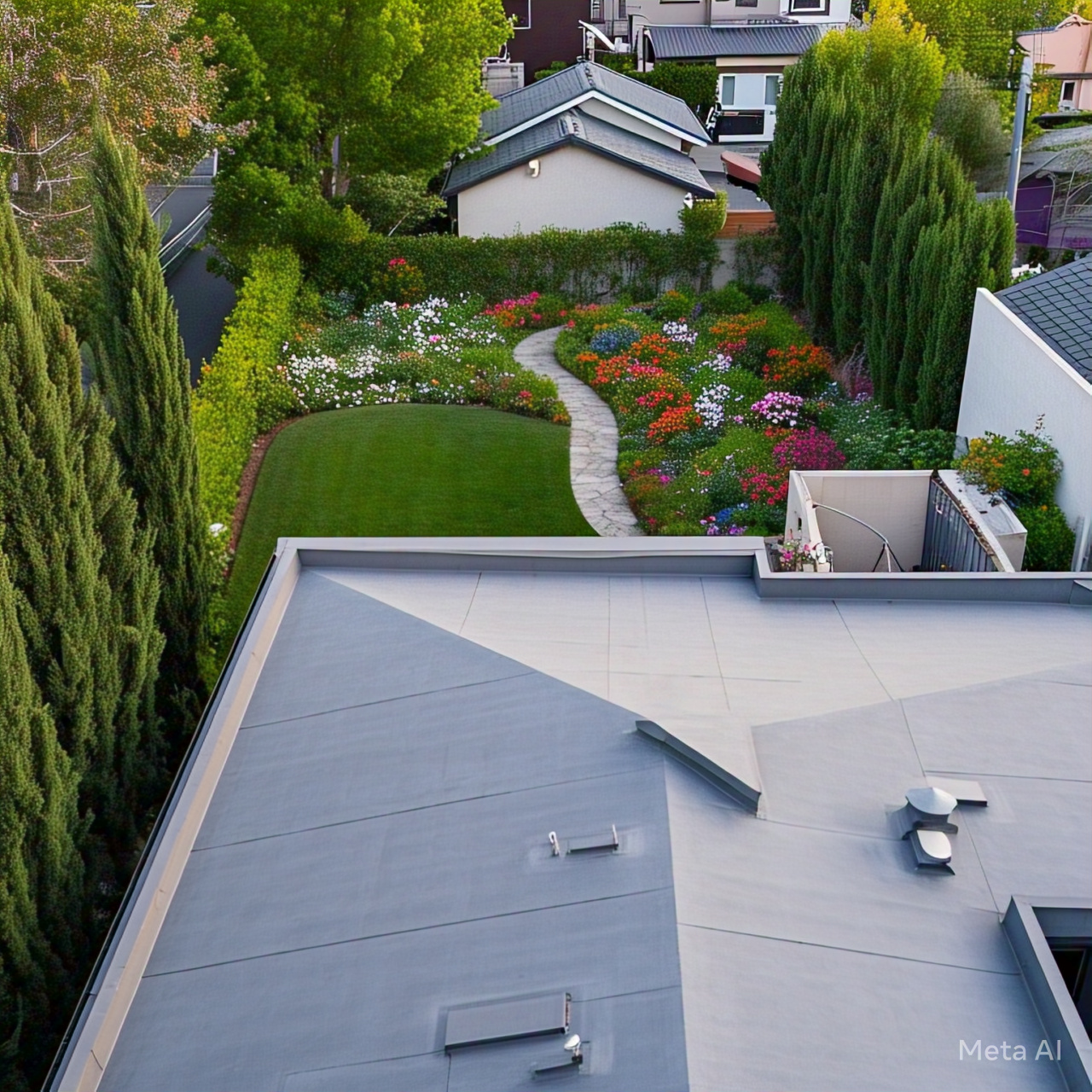A flat roof is more than just a surface over your head. It’s a crucial barrier against the elements. But how do you choose the right material? Two of the most popular contenders in the UK are GRP (Glass Reinforced Plastic) and EPDM (Ethylene Propylene Diene Monomer). Each has strengths, weaknesses, and ideal use cases.
So, which is better for your home, office, or extension?
Let’s break it down.
What Are GRP and EPDM?
Before we compare them, let’s define them:
GRP (also known as fibreglass roofing):
- Made from polyester resin reinforced with glass fibres.
- Installed in liquid form, then hardened into a seamless surface.
- Often used for smaller flat roofs, balconies, and dormers.
- A single-ply membrane made from synthetic rubber.
- Supplied in large rolls.
- Installed in one piece, glued or ballasted in place.
Both are modern alternatives to traditional felt or bitumen, offering longer lifespans and better performance.
Installation: Which Is More Straightforward?
EPDM wins on ease and speed:
- Supplied in large sheets, sometimes covering a full roof without joins.
- Can be installed in a day.
- Minimal tools and training required.
- Ideal for DIYers or fast turnarounds.
GRP is more labour-intensive:
- Requires a dry, warm day for installation.
- Applied in layers: resin, matting, more resin, then a topcoat.
- Needs a trained flat roofing installer for best results.
- Installation time: typically 2–3 days.
Question: Is a faster install worth compromising on complexity or finish?
Durability: How Long Do They Last?
GRP is hard and impact-resistant:
- Lifespan: 25–30 years when correctly installed.
- Excellent for foot traffic areas like terraces and walkways.
- Resistant to fire, moss, and vandalism.
- However, it can crack under thermal movement if not well-designed.
EPDM is flexible and UV-resistant:
- Lifespan: 20–30 years, sometimes more.
- Withstands extreme temperatures without cracking or shrinking.
- Less resistant to punctures from sharp objects (e.g. tools, falling branches).
- Can be patched easily if damaged.
Which matters more for your project: foot traffic or flexibility?
Maintenance: How Do They Hold Up?
GRP requires little attention:
- Annual inspection is usually enough.
- Dirt or algae can be cleaned with warm soapy water.
- Any damage often requires full section reapplication, not simple patches.
EPDM is low-maintenance and easy to repair:
- Wipe clean surface.
- Patches can be glued onto tears or holes.
- Less prone to cracking or crazing over time.
Real-World Insight:
A 2021 survey of UK roofing contractors showed 68% rated EPDM as “easier to maintain” compared to GRP. Why? The ease of patch repairs and the forgiving nature of the rubber membrane.
Aesthetics: What Does It Look Like?
GRP offers a clean, glossy finish:
- Available in a range of colours (typically grey).
- Can be finished with anti-slip textures for walkways.
- Looks modern and seamless—no visible joins.
EPDM is matte and black:
- More functional than decorative.
- Not ideal if the roof is visible from upper floors.
- However, some versions can be covered with green roofing or gravel ballast.
Will you see the roof every day—or never think about it again?
Cost: What’s the Investment?
EPDM is generally cheaper:
- Material cost: ~£8–£12 per m².
- Faster installation lowers labour costs.
- DIY potential means additional savings.
GRP is pricier:
- Material cost: ~£15–£25 per m².
- Labour costs higher due to complexity and time.
- Professional installation is essential for longevity.
Example:
For a typical 30m² extension roof:
- EPDM total cost: ~£700–£1,000
- GRP total cost: ~£1,200–£1,800
Is appearance and durability worth the added cost?
Climate Suitability: How Do They Cope with British Weather?
GRP prefers stable conditions:
- Must be installed dry; rain mid-install can ruin it.
- Performs well in both cold and warm conditions once cured.
- May suffer from microcracking in high movement areas unless expansion joints are included.
EPDM loves variation:
- Excellent resistance to UV, snow, ice, and rain.
- Stays flexible in winter, doesn’t shrink in summer.
- One-piece install means fewer risks from water ingress.
Environmental Impact: Which Is Greener?
EPDM is often more eco-friendly:
- Made from recycled rubber in some cases.
- Can be fully recycled at end-of-life.
- Suitable for green roofs, which help biodiversity and reduce runoff.
GRP isn’t as green:
- Resin and fibreglass are petrochemical-based.
- Difficult to recycle due to mixed materials.
- Long lifespan offsets some of the environmental footprint.
Ideal Applications: When to Choose What
Choose GRP if:
- The roof is visible or part of a design feature.
- You want a seamless, walkable surface.
- You’re planning a balcony, terrace, or complex shape.
Choose EPDM if:
- Budget or speed is a concern.
- You need a robust, weather-resistant option.
- The roof is out of sight and form isn’t a priority.
Common Mistakes to Avoid
- With GRP:
- Installing in damp conditions—leads to curing issues.
- Not allowing for thermal movement—causes cracks.
- Poor detailing at upstands and corners.
- With EPDM:
- Cutting corners on adhesives—can cause lifting.
- Not preparing the deck—traps moisture underneath.
- Using on highly trafficked areas without protection boards.
What Do the Experts Say?
A 2022 study by the NFRC (National Federation of Roofing Contractors) showed:
- EPDM had a 96% success rate on first-time installations.
- GRP had a 91% satisfaction rate but required more callbacks for edge detailing.
Contractors also noted that:
- EPDM works better for large commercial roofs.
- GRP suits smaller, high-detail domestic projects.
Final Thoughts
There’s no single “best” choice—only the right fit for your needs.
Ask yourself:
- Is the roof visible or decorative?
- Will people walk on it regularly?
- Do you need quick, budget-friendly installation?
- Is weatherproofing or visual appeal your top priority?
Your answers will guide you to the right material.
Sometimes, hybrid solutions are also worth exploring—like combining EPDM with paving slabs or green roofing systems. Talk to a qualified installer and get quotes for both before making your decision.





